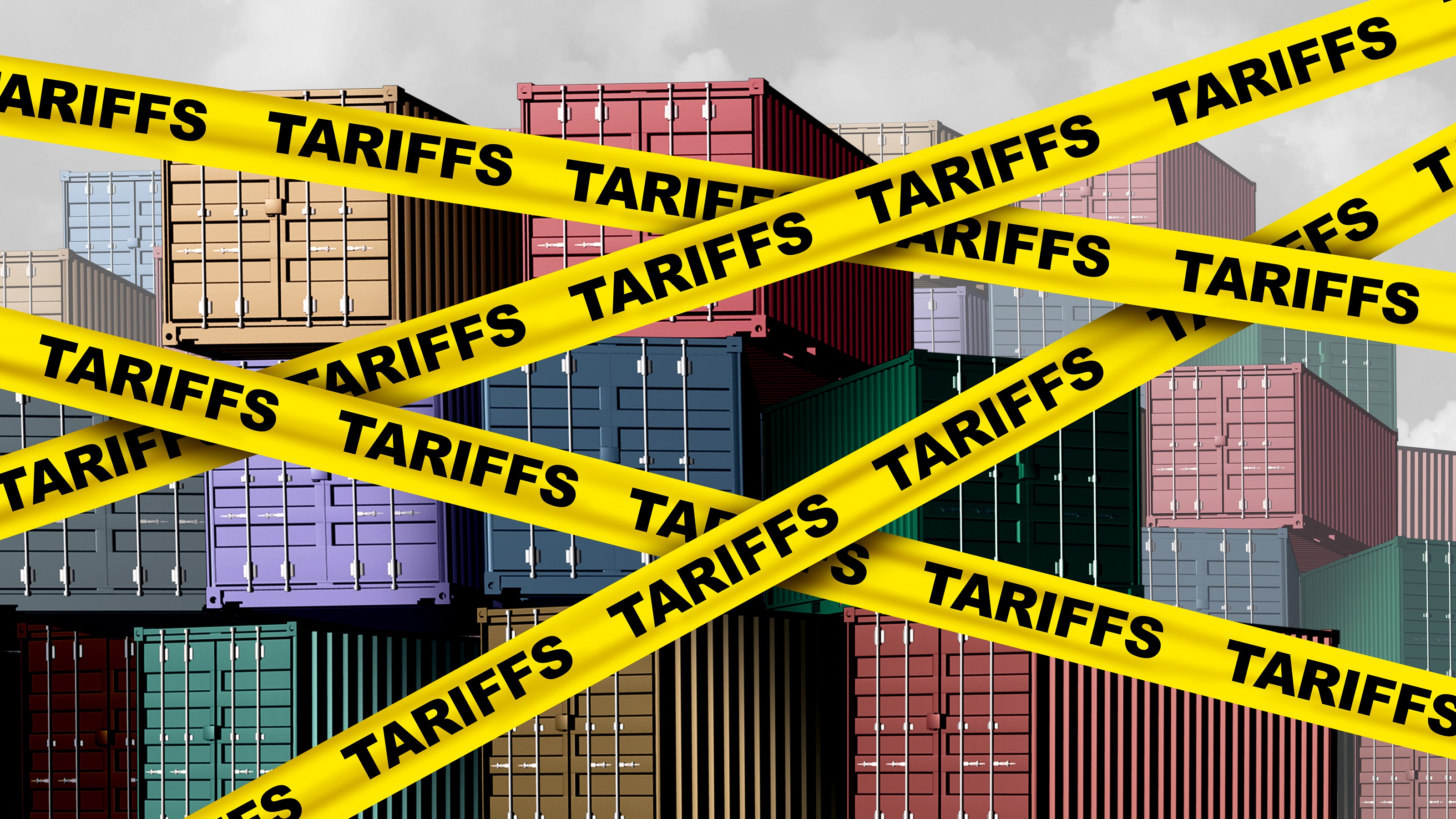Yes, Investing Feels Scary Right Now
That knot in the pit of your stomach could be loosened by a little rebalancing to help get your retirement portfolio back on track.

If you were paying attention to the stock market over the past year or so (and not just for the past few weeks) you probably noticed things were getting volatile even before the coronavirus knocked the economy for a loop.
A smooth and mostly carefree 2019 brought historically excellent returns in the stock market, lifting the balances of many savers’ 401(k)s and, no doubt, raising their expectations for future returns. But 2020 arrived with uncertainty, followed by a late February slump that shook investor confidence. And the hits just kept coming in March and April.
It can be difficult to get past your emotions at a time like this, and harder still to make important decisions about your retirement accounts. And that’s OK. But after you’ve had a chance to pause, take a breath and assess the damage, there are some things you can do to take advantage of a market pullback. And right now, I see many investors who could benefit from rebalancing their 401(k)s and other retirement accounts.

Sign up for Kiplinger’s Free E-Newsletters
Profit and prosper with the best of expert advice on investing, taxes, retirement, personal finance and more - straight to your e-mail.
Profit and prosper with the best of expert advice - straight to your e-mail.
Look at Your Options and Evaluate Your Risk
Before looking at why or how this rebalancing should be done, it’s important to understand the types of investment holdings you have in your account. Most 401(k)s contain a variety of mutual funds, allowing employees to choose what they want to invest in. A typical menu might include index funds, large-cap and small-cap funds, foreign funds, real estate funds and bond funds.
Most people choose their investments based on the amount of risk they’re willing to take. Some might be willing to accept greater losses in exchange for the potential of higher returns. Those who are more concerned with preserving the money they’ve saved might gravitate toward more conservative choices. Depending on their age, goals and risk tolerance, the options available can be mixed and matched to an individual’s desired level of risk. And often, investors choose that portfolio mix (60% stocks and 40% bonds, for example) and never think about it again.
Balance Like a Bodybuilder
However, when the markets expand or contract significantly, the percentage attached to each of these asset classes will naturally expand and contract as well. Think about it like bodybuilders who must balance their training in a way that produces the physical outcome they are after. A gym rat might love the quick results he sees when he focuses on his biceps and pecs. But if he overtrains his upper body and neglects his legs, the results could look a little off.
Similarly, investors should look at their whole portfolio on a periodic basis to determine whether they still have the balance they intended when they originally made their 401(k) choices. They might find their stock-based funds have done the heavy lifting since 2009. And because stocks have been outperforming bonds for so long, the result is that the investment mix has likely drifted toward a more aggressive position than they expected. This is what happened to many investors over the past 10 years, capped off by a very strong 2019.
Of course, no one was complaining when the markets were on a tear and their 401(k) balance was healthy and growing. Caught up in that wave, you might not even have noticed that you were moving away from a more comfortable level of risk. But when the market tumbles, those who haven’t rebalanced their accounts are likely to end up experiencing higher losses than they planned.
Rebalancing is like pressing the reset button. You buy and sell portions of your portfolio to get your asset allocation back to where you want it. That might mean returning to the original percentages you chose, or, if your risk tolerance has changed, you can make appropriate adjustments.
Don’t Wait for Trouble
You don’t have to wait for a big market loss to rebalance your portfolio. Some people do it on a schedule — once every year or two. Some review their accounts and only rebalance if they see a need. If you’re working with a robo-adviser, regular rebalancing may be part of the service you signed up for.
But at times like these, especially, it can help to know where you stand so you know what to do next. Rebalancing can help you get back on track and stay on track.
You’ve probably heard the saying that the best plan is the one you’ll stick with — and that’s definitely true when it comes to saving for the future.
Yes, investing feels scary and shaky right now. But rebalancing is a solid first step that can keep you moving toward your goals.
Investment advisory services offered through Hobart Private Capital, LLC, an SEC-Registered Investment Advisor. Insurance services offered separately through Hobart Insurance Services, LLC, an affiliated insurance agency. Securities offered through Cape Securities, Inc., Member FINRA/SIPC. Hobart Private Capital and Hobart Insurance Services are not affiliated with Cape Securities.
This information is intended for educational purposes only. It is not intended to provide any investment advice or provide the basis for any investment decisions. You should consult your financial adviser prior to making any decision based on any specific information contained herein. Investing involves risk, including possible loss of principal. No investment strategy can ensure a profit or guarantee against loss in a declining market.
Appearances on Kiplinger.com were obtained through a paid PR program.
Kim Franke-Folstad contributed to this article.
Get Kiplinger Today newsletter — free
Profit and prosper with the best of Kiplinger's advice on investing, taxes, retirement, personal finance and much more. Delivered daily. Enter your email in the box and click Sign Me Up.
As director of financial planning at the Hobart Financial Group (www.hobartwealth.com), Corey Sunstrom focuses on helping clients meet their goals. He has a Masters in Trust and Wealth Management from Campbell University and a bachelor's degree in business administration (finance and marketing) from North Carolina State University.
-
 Bouncing Back: New Tunes for Millennials Trying to Make It
Bouncing Back: New Tunes for Millennials Trying to Make ItAdele's mournful melodies kick off this generation's financial playlist, but with the right plan, Millennials can finish strong.
By Alvina Lo
-
 Early-Stage Startup Deals: How Do Convertible Notes Work?
Early-Stage Startup Deals: How Do Convertible Notes Work?Some angel investors support early startups by providing a loan in exchange for a convertible note, which includes annual interest and a maturity date.
By Murat Abdrakhmanov
-
 Bouncing Back: New Tunes for Millennials Trying to Make It
Bouncing Back: New Tunes for Millennials Trying to Make ItAdele's mournful melodies kick off this generation's financial playlist, but with the right plan, Millennials can finish strong.
By Alvina Lo
-
 Early-Stage Startup Deals: How Do Convertible Notes Work?
Early-Stage Startup Deals: How Do Convertible Notes Work?Some angel investors support early startups by providing a loan in exchange for a convertible note, which includes annual interest and a maturity date.
By Murat Abdrakhmanov
-
 SRI Redefined: Going Beyond Socially Responsible Investing
SRI Redefined: Going Beyond Socially Responsible InvestingNow that climate change has progressed to a changed climate, sustainable investing needs to evolve to address new demands of resilience and innovation.
By Peter Krull, CSRIC®
-
 Here's When a Lack of Credit Card Debt Can Cause You Problems
Here's When a Lack of Credit Card Debt Can Cause You ProblemsUsually, getting a new credit card can be difficult if you have too much card debt, but this bank customer ran into an issue because he had no debt at all.
By H. Dennis Beaver, Esq.
-
 Going to College? How to Navigate the Financial Planning
Going to College? How to Navigate the Financial PlanningCollege decisions this year seem even more complex than usual, including determining whether a school is a 'financial fit.' Here's how to find your way.
By Chris Ebeling
-
 Financial Steps After a Loved One's Alzheimer's Diagnosis
Financial Steps After a Loved One's Alzheimer's DiagnosisIt's important to move fast on legal safeguards, estate planning and more while your loved one still has the capacity to make decisions.
By Thomas C. West, CLU®, ChFC®, AIF®
-
 How Soon Can You Walk Away After Selling Your Business?
How Soon Can You Walk Away After Selling Your Business?You may earn more money from the sale of your business if you stay to help with the transition to new management. The question is, do you need to?
By Evan T. Beach, CFP®, AWMA®
-
 Two Don'ts and Four Dos During Trump's Trade War
Two Don'ts and Four Dos During Trump's Trade WarThe financial rules have changed now that tariffs have disrupted the markets and created economic uncertainty. What can you do? (And what shouldn't you do?)
By Maggie Kulyk, CRPC®, CSRIC™